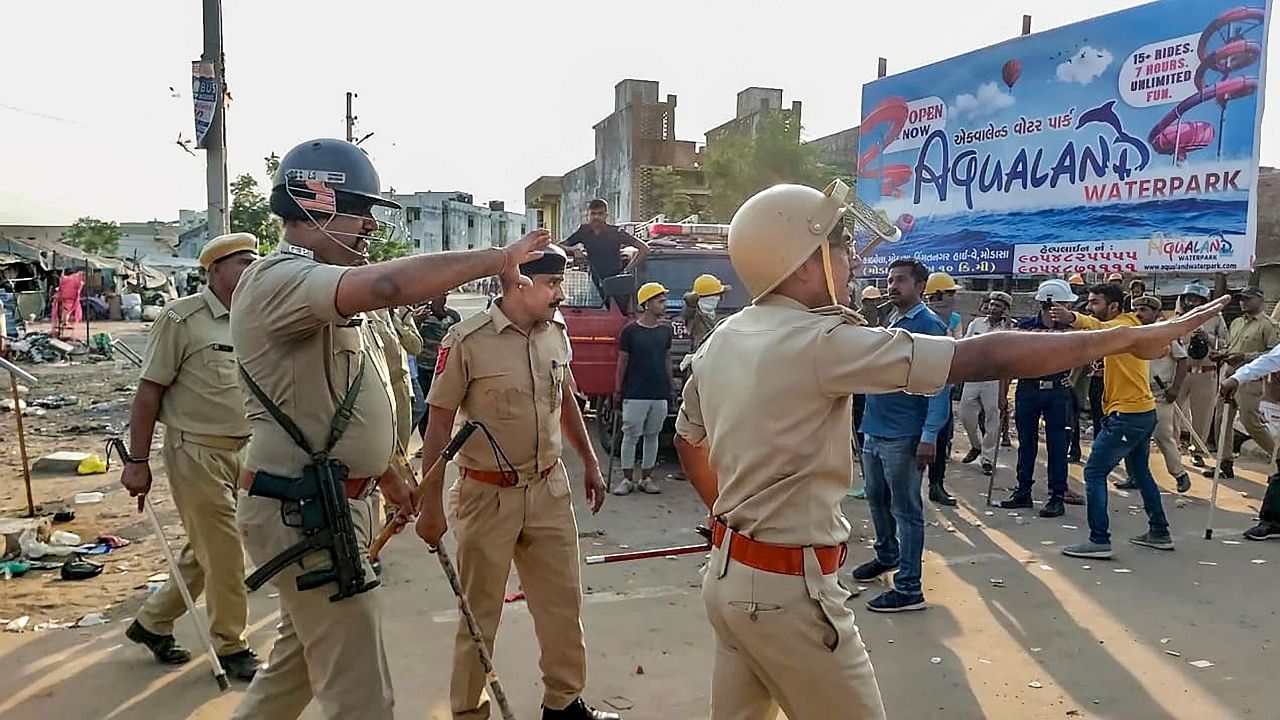
It was in 1990 that a Rashtriya Swayamsevak Sangh (RSS) worker in Mumbai told me of the organisation's plan to celebrate Ram Navami in a big way - not in the entire city, but in one suburb which had seen two communal riots in quick succession. The Bharatiya Janata Party (BJP) workers had been active then, and the RSS wanted to build on the momentum achieved.
Ram Navami was at that time not celebrated on the streets of Mumbai; but, said the RSS man, now all Hindu festivals would be used to mobilise the community. The mobilisation was important because the first attempt to demolish the Babri Masjid in October 1990 had failed, thanks to the then Uttar Pradesh chief minister Mulayam Singh Yadav's determination to protect the 16th-century mosque. Sixteen Hindus had died in police firing; this said the RSS worker, who had participated in that attempt, had angered UP's policemen, who told him they'd help the movement however they could.
This encounter came back to me after the recent Ram Navami riots, which also brought to mind the time I first realised the significance of processions for communal parties. After 150 Dalit families converted to Islam in Meenakshipuram in 1981, the VHP started `yatras' across the country to "unite Hindus". But another 'yatra' closer to Mumbai was then creating tension.
The annual Shivaji Jayanti procession had been banned in the powerloom township of Bhiwandi, outside Mumbai, since 1970, when it had triggered large-scale violence. For a decade, the ban had been respected; but from 1982 onwards, the Shiv Sena and BJP began violating it with small processions. With the communal atmosphere in Bhiwandi already vitiated, their attempts generated such fear that the days preceding Shivaji Jayanti would witness an exodus of both Hindu and Muslim migrant workers from Bhiwandi.
I recall arguments with Hindus in Thane, the suburb adjoining Bhiwandi. Why should Hindus celebrating a major occasion be prevented from passing outside a mosque or playing music there, they would ask indignantly. These were moderate, educated Hindus, who had good relations with Thane's Muslims. Not the sort who would join these processions, perhaps they didn't know the frenzy which overtook the processionists when they passed a mosque; the way they threw gulal on it, spurred by the knowledge that Muslims didn't play with gulal; the manic way they banged on their drums outside mosques.
Finally, in 1984, Bhiwandi - and Thane and Mumbai - did erupt in violence a few weeks after Shivaji Jayanti. The same year, a Ganpati procession in Hyderabad sparked a major riot. And after l'affaire Shah Bano in 1985, the VHP's yatras became a constant, culminating in L K Advani's 1990 rath yatra, all of them sparking off communal violence even in towns that had never seen any.
Decades later, what's changed? Ram Navami is still being used to mobilise Hindus. Processions continue to be a means of displaying a community's might. Those taken out by Hindutvavadis continue to stop outside mosques. Other Hindus continue to ask what's wrong with this.
Yet, there's a change.
This time the Ram Navami processionists weren't playing musical instruments; they had DJs conducting the show with laser lights. They weren't shouting religious slogans; instead, their slogans and songs comprised nothing but abuses and threats against Muslims. Indeed, the videos that went viral on social media showed a complete lack of religiosity in these processions supposedly meant to remember a God. Ironically, those inside the mosques, the people being abused, were actually busy in worship: this is the Muslim's holiest month. Not the first time that Ramzan has been observed under the shadow of riots, either.
This time, the desire to bully Muslims that lies behind the Hindutvavadis' insistence on stopping outside mosques was accompanied by an ugly triumphalism, emanating perhaps from the affiliations the organisers of these processions have with the party that rules the country, as well as half of the eight states where violence broke out.
Is it any surprise, then, that Muslims reacted? Not only was the conduct of the processionists vile enough to shame any Hindu, it came after continuous attacks on Muslim livelihoods and identity by BJP governments and leaders, amplified manifold on social media. The images of humiliation and violence that reached every corner led to one conclusion: the government itself had become a majoritarian mob. From whom could a targeted minority expect help?
Religious processions sparked off the first riots in the 1960s. Half a century should have been enough to lay down procedures for their peaceful conduct; also to ensure that police don't turn into Hindutva supporters. No government thought this important. But it's not too late for non-BJP governments to do so.
(Jyoti Punwani is a journalist.)
Disclaimer: The views expressed above are the author's own. They do not necessarily reflect the views of DH.